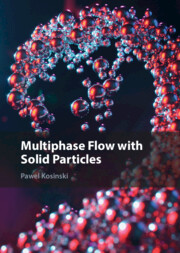Refine search
Actions for selected content:
3 results
5 - Adhesion
-
- Book:
- Multiphase Flow with Solid Particles
- Published online:
- 05 October 2023
- Print publication:
- 19 October 2023, pp 115-138
-
- Chapter
- Export citation

Multiphase Flow with Solid Particles
-
- Published online:
- 05 October 2023
- Print publication:
- 19 October 2023
4 - Interactions of Particles, Droplets, and Bubbles
- from Part I - Principles
-
- Book:
- Dynamics of Multiphase Flows
- Published online:
- 10 September 2021
- Print publication:
- 17 June 2021, pp 126-171
-
- Chapter
- Export citation
